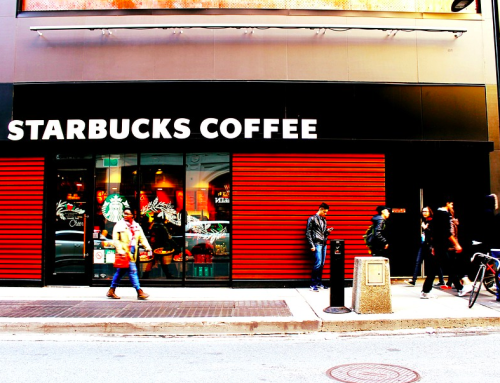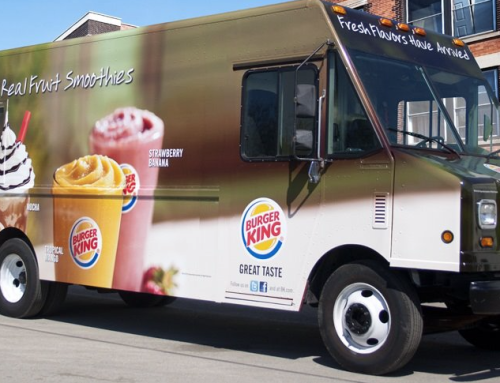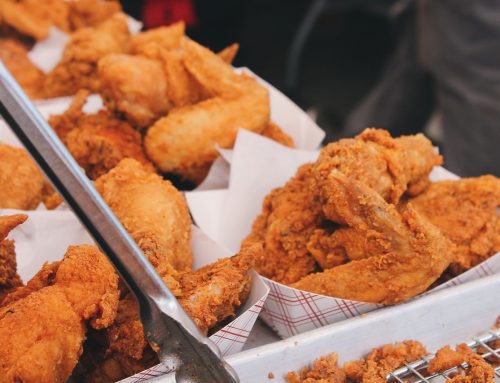On October 12, 2012, Austrian skydiver Felix Baumgartner broke the world record for skydiving, having jumped off from an altitude of 39 kilometers above the earth at a speed of Mach 1.25. This amazing athlete—along with this particular skydiving event—is just one of the many athletes and events sponsored by the world-famous energy drink Red Bull.
With its famous tagline “Red Bull gives you wings,” the brand quickly soared to become the leader in the $57+ billion dollar global energy drink market since the company was founded back in 1984. Gym buffs, athletes, and even ordinary folks who needed an afternoon pick-me-up loved this energy-boosting concoction.
Due to its unique and effective marketing style, Red Bull is often linked to traveling, extreme sports, e-sports, and other activities that invoke thrill, excitement, skill, and adventure.

Red Bull energy drink cans.
While Red Bull continues to soar with 154 million case sales in 2020 alone, the rapid growth seems to have stalled in recent years. Some competitors like Rockstar energy drink sales are declining, in part due to critic claims that the drinks aren’t healthy and contain too much caffeine, sugar, glucose and citric acid.
Wondering about the future of Red Bull? Check out this in-depth SWOT analysis of Red Bull’s overall performance in the industry to see what the future hold.
SWOT Analysis for Red Bull
Strengths of Red Bull
- Red Bull dominates the market when it comes to energy drinks, both in the US and all around the world Their biggest competitors—Monster, Pepsi Co, Coca Cola, and Dr. Pepper—are distant seconds. In 2020, Red Bull sold more than 7.9 billion cans of energy drink, capturing the bulk of the global market share.
- Red Bull has an exceptionally strong global presence all over the world, serving different markets in Americas, Europe, Africa, Asia, and Australia. This global presence promotes their long-term growth, stability, branding, and marketing.
Related Reading: 201+ Insane Energy Drink Marketing Slogans to Pump You Up
- Red Bull’s branding is incredibly strong, consistent, and effective. They use travel and extreme sports to carry their brand to those seeking adventure and thrill. Their positioning is such that the brand projects feelings or perceptions of freedom, excitement, strength, power, and discovery.
- The Red Bull branding is embedded in the market’s mind. Instead of following and implementing traditional marketing approaches, Red Bull used sports events and sponsored extreme sports endeavors, athletes, e-sports events, and sports teams to create awareness and “brand myth.” In addition, they leveraged social media to perpetuate this brand myth. This creative strategy is so successful that over time, the Red Bull brand is now valued at $9.9 billion. It’s also the 71st most valuable brand in 2019.
- Red Bull is currently enjoying a healthy sales growth all around the world.
- Red Bull has an extensive network of dependable suppliers and dedicated distributors, altogether creating an extremely effective supply chain. This efficiency eliminated bottlenecks, ensuring that raw materials for producing the drinks are readily available. Subsequently, this also means that stores, supermarkets, groceries, and other establishments all across the world that sell Red Bull are always sufficiently stocked.
Weaknesses of Red Bull
- Over the bulk of its existence, Red Bull has several variations of its energy drink, but all are based on the same formula. Each variant differs only in flavor and color. It’s only recently that they introduced sugar-free and extra-strength formulations. In addition, some of the flavors are available only in certain regions or specific seasons.
- With their high sugar and caffeine content, energy drinks, including Red Bull, are perceived to be unhealthy. Some competing brands adjusted their formulations to cater to the health-conscious market. However, Red Bull is incredibly resistant to altering its formulation, causing a continuous belief that its products are not good for the body.
- When it comes to energy drinks, Red Bull is on the expensive end. This makes it difficult for the middle and lower class to afford the product.
- It’s virtually impossible to enforce a patent of Red Bull energy drinks because the company did not come up with its own unique ingredients. All ingredients in a Red Bull drink are common in other brand’s energy drinks.
Opportunities
- Traditionally, the US and European countries are the company’s major markets. With more and more brands entering into the energy drink industry, the US and European markets are becoming saturated. This is a great opportunity for Red Bull to increase their marketing efforts in emerging markets in Asia, Africa, and Latin America.
- Asian, African, and Latin American nations have beautiful mountains, canyons, karst formations, and other geological features that are ideal for extreme sports, travel, and adventure. Red Bull uses and sponsors these activities for their brand-myth creation strategies. Exploring these new venues gives them the opportunity to enhance their branding and marketing strategies and, at the same time, boosts the regions’ tourism.
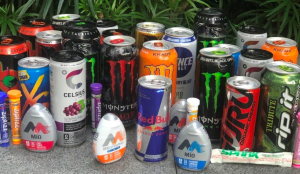
The energy drink industry is valued at more than $54+ billion.
- Red Bull can focus on its R&D and expand its products to include healthy drinks such as juices and nutrient-enriched sodas. It’s a perfect opportunity for them to do so considering more and more people are becoming health conscious. By introducing healthy drinks, Red Bull can penetrate into the healthy food-and-beverage market.
- Even if Red Bull sticks to the same energy drink formulation, they can still create more new flavors and new varieties. This allows them to target a wider segment.
- Red Bull has a lot of experience and history as a sponsor and organizer of sports events. Using their experience, the company can expand into sports-related industries.
- Recent studies by the European Food Safety Authority show that the taurine and glucuronolactone content in a serving of Red Bull energy drink doesn’t constitute a safety concern. In addition, the Human Kinetics Journal mentions that consuming Red Bull in moderate amounts helped increase endurance. Red Bull can leverage these studies to convince the market that their energy drink, contrary to public opinion, is actually healthy.
Threats
- With the prevalence of lifestyle-related diseases, governments in many countries may provide tougher regulations for products with unhealthy ingredients. Can you imagine energy drinks that contain certain ingredients being banned in some countries or states. This may sounds far-fetched, but it could happen.
- The growing trend of health consciousness causes people to steer away from drinks with caffeine, artificial flavors, concentrates, sugar, and so on. These ingredients are common in energy drinks, including Red Bull. This makes Red Bull quite susceptible to a rapidly increasing number of health-conscious consumers. Red Bull may need to adapt their flavors to stay relevant to consumers.
- In addition to Monster, Pepsi Co, and other competitors, Red Bull is also facing market saturation from many smaller companies.
- Red Bull is considered a luxury product. This makes the brand vulnerable to lower consumer spending due to the ongoing global economic recession. Luxury products are often cut off from tight budgets.
- The ongoing COVID-19 pandemic has severely limited social gatherings such as parties and sports events. In many cases, such events are postponed. These events are the main marketing tools of Red Bull, and the limitation and cancellation of such events have relentlessly created havoc on the company’s marketing efforts. Fortunately, things appear to be opening up around the world in 2022. Hopefully Red Bull can get back to these live events.
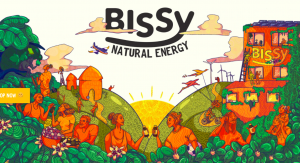
A natural energy drink alternative.
An Overlooked Threat
Because the ingredients in Red Bull are common, other companies can make their own energy drinks but sell them at cheaper prices. Many competitors have sprouted all across the world, formulating their own similar but more affordable energy drinks. This growing popularity of these cheaper energy drinks not only chips away Red Bull’s market segment. It also allows competitors to target lower-income markets that can’t afford authentic Red Bull.
Short History
Red Bull is the brainchild of Austrian entrepreneur Dietrich Mateschitz. While traveling in Thailand in 1982, Dietrich met Chaleo Yoovida, the CEO of TC Pharmaceutical. Chaleo had already introduced an energy drink called Krating Daeng in his home country. The drink proved to be a hit and a favorite with Thai truck drivers, laborers, and other blue-collar workers.
While drinking Krating Daeng, Dietrich realized that the drink can reduce the perennial travel-related problem of jet lag. Thus, 2 years after in 1984, with Krating Daeng as an inspiration, Dietrich and his newfound partner Chaleo founded Red Bull GmBH. With an initial investment of $1,000,000 and holding a 49% share, they introduced the company to the world. Both decided that Dietrich would run the company.
Related Reading: 149 Hyper-Creative Energy Drink Company Name Ideas
The Red Bull drink was then launched in Austria in April 1987, targeting skiers in the country. Red Bull branded their product as a trendy, chic energy drink. Thus, with the Mateschitz-Yoovida partnership, Red Bull was positioned as a premium drink while Krating Daeng as a lower-cost counterpart. Both products dominate both high and low ends of the price scale, especially in countries where the two products are both sold.
In the 1990s, Red Bull expanded to other European countries such as the UK, Germany, Slovenia, and Hungary. Later, in 1997, it expanded to the US and the Middle East 2000.
Red Bull GmbH has an established headquarters in a small and scenic Austrian village called Fuschl am See, near Salzburg, the 4th largest city in Austria. The Yoovidhya family, for technical reasons, owns 51% of the company. They also hold trademarks in the US and Europe.
The success of Red Bull catapulted both Dietrich and Chaleo into the halls of the elite. According to Forbes magazine in 2008, both men were the 250th richest people in the world. Together, they have an estimated net worth of $4 billion dollars.
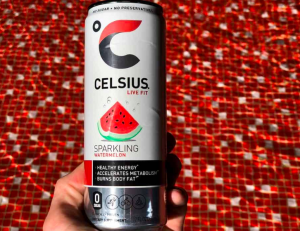
A Red Bull competitor.
Products
Red Bull drink has the same ingredients, but the amount of each ingredient varies, depending on the country where the drink is brewed. Red Bull contains caffeine, various vitamins B, taurine, and simple sugars. They are mixed in a buffer solution of magnesium carbonate, baking soda, and carbonated water. In some countries, a citric acid or trisodium citrate buffer is used as a substitute. Whatever the case, the buffer solutions contain electrolytes. Earlier formulations of Red Bull contain glucuronolactone, but this was later removed.
Since the drink’s inception, Red Bull’s flavoring is produced in Bangkok.
To address customer demands for different flavors, Red Bull offered variations of its energy drink. While the color and taste may vary, each variant has the same basic formula as the original blend.
Related Reading: 37 Energy Drink Consumption Statistics and Trends
In 2003, Red Bull released a sugar-free version called Red Bull Sugarfree. Much later in 2012, the company introduced Red Bull Total Zero, an energy drink without calories. In 2018, the company released another sugar-free variant called Red Bull Zero, formulated to resemble the taste of the original drink.
Conversely, in 2009, Red Bull introduced Red Bull Energy Shot, a highly concentrated version of the original drink for athletes who demand more energy.
In 2013, the company launched Red Bull Editions to diversify its flavors. These included cranberry, blueberry, and lime. There are other flavors, but they are only available in certain places or specific seasons.
Finally, in 2018, Red Bull introduced Organics, which are flavored sodas. Flavors were bitter lemon, tonic water, and ginger air. In the same year, the company also launched Red Bull Simply Cola.
This SWOT analysis will hopefully give you light on the characteristics of the brand so you can formulate your own business strategies, considering that you’re stocking Red Bull or thinking about investing in the company. Red Bull is owned by the Austrian based parent company called Red Bull GmbH. Contrary to what some people believe, Red Bull is not owned by Pepsico or Coca-Cola.

